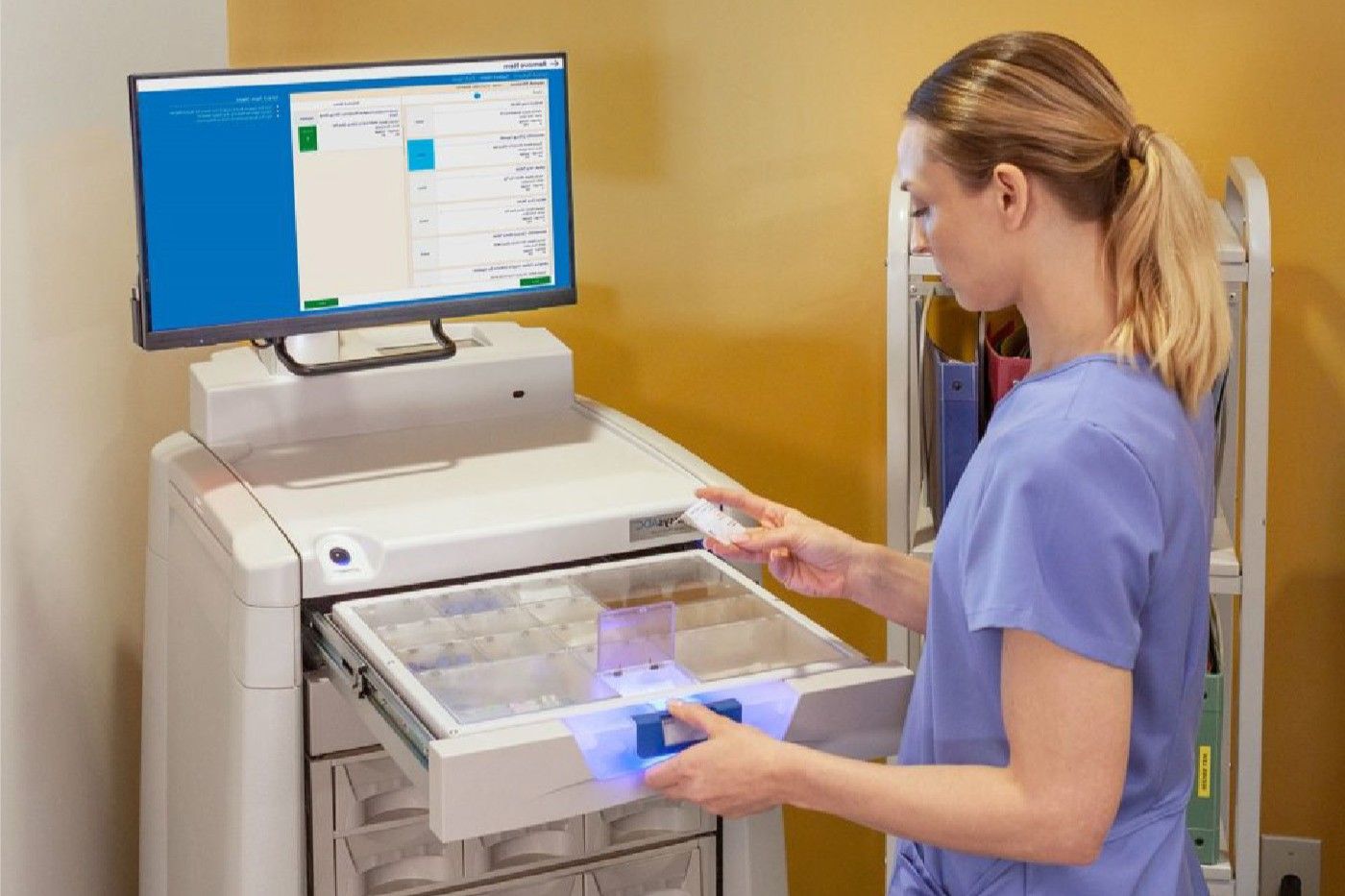
Automated medication dispensing systems are transforming how healthcare facilities manage and distribute medications. These systems ensure that patients receive the correct medication at the right time, reducing human error and improving overall efficiency. But what exactly makes these systems so effective? Automated medication dispensing systems use advanced technology to track, store, and dispense medications accurately. They integrate with electronic health records, providing real-time data and enhancing patient safety. From hospitals to nursing homes, these systems are becoming indispensable tools in modern healthcare. Curious about how they work and their benefits? Let's dive into 29 fascinating facts about these innovative systems.
What is an Automated Medication Dispensing System?
Automated medication dispensing systems (AMDS) are revolutionizing healthcare by ensuring accurate and timely delivery of medications. These systems are designed to reduce human error, improve efficiency, and enhance patient safety.
-
Accuracy: AMDS can significantly reduce medication errors by ensuring the correct dosage and medication are dispensed.
-
Efficiency: These systems streamline the medication dispensing process, saving time for healthcare professionals.
-
Patient Safety: By minimizing human error, AMDS enhance patient safety and improve overall healthcare outcomes.
-
Inventory Management: AMDS help in maintaining accurate inventory records, reducing the chances of stockouts or overstocking.
-
Cost Savings: By reducing medication errors and improving efficiency, AMDS can lead to significant cost savings for healthcare facilities.
How Do Automated Medication Dispensing Systems Work?
Understanding the mechanics behind AMDS can provide insight into their benefits and limitations. These systems use advanced technology to automate the medication dispensing process.
-
Barcode Scanning: AMDS often use barcode scanning to ensure the correct medication is dispensed.
-
Electronic Prescriptions: These systems can integrate with electronic prescription systems, ensuring seamless communication between healthcare providers and the dispensing system.
-
Automated Counting: AMDS can automatically count and dispense the correct number of pills or doses.
-
Real-Time Monitoring: These systems offer real-time monitoring of medication usage and inventory levels.
-
User Authentication: To ensure security, AMDS require user authentication before dispensing medication.
Benefits of Automated Medication Dispensing Systems
The advantages of AMDS extend beyond just accuracy and efficiency. They offer numerous benefits that can transform healthcare delivery.
-
Reduced Workload: By automating the dispensing process, AMDS reduce the workload on healthcare staff.
-
Improved Compliance: These systems help ensure compliance with medication administration protocols.
-
Enhanced Reporting: AMDS provide detailed reports on medication usage, helping in better decision-making.
-
Patient Adherence: By ensuring timely and accurate dispensing, these systems can improve patient adherence to medication regimens.
-
Error Reduction: AMDS significantly reduce the chances of human error in medication dispensing.
Challenges and Limitations of Automated Medication Dispensing Systems
Despite their numerous benefits, AMDS are not without challenges. Understanding these limitations can help in better implementation and utilization.
-
High Initial Cost: The initial cost of implementing AMDS can be high, which may be a barrier for some healthcare facilities.
-
Maintenance Requirements: These systems require regular maintenance to ensure they function correctly.
-
Training Needs: Staff need to be adequately trained to use AMDS effectively.
-
Technical Issues: Like any technology, AMDS can face technical issues that may disrupt the dispensing process.
-
Integration Challenges: Integrating AMDS with existing healthcare systems can sometimes be challenging.
Future of Automated Medication Dispensing Systems
The future of AMDS looks promising with advancements in technology and increasing adoption in healthcare facilities.
-
AI Integration: Future AMDS may integrate artificial intelligence to further enhance accuracy and efficiency.
-
Remote Monitoring: Advanced systems may offer remote monitoring capabilities, allowing healthcare providers to monitor medication dispensing from anywhere.
-
Patient-Centric Features: Future systems may include features that cater specifically to patient needs, such as personalized medication reminders.
-
Improved Security: Enhanced security features will ensure that only authorized personnel can access and dispense medications.
-
Scalability: Future AMDS will be more scalable, allowing them to be used in a variety of healthcare settings, from small clinics to large hospitals.
Real-World Applications of Automated Medication Dispensing Systems
AMDS are already being used in various healthcare settings, demonstrating their effectiveness and versatility.
-
Hospitals: Many hospitals use AMDS to ensure accurate and timely medication dispensing.
-
Pharmacies: Retail and hospital pharmacies use these systems to manage inventory and improve dispensing accuracy.
-
Long-Term Care Facilities: AMDS are used in long-term care facilities to ensure residents receive their medications on time.
-
Home Healthcare: Some advanced AMDS are designed for home use, helping patients manage their medications independently.
The Final Word on Automated Medication Dispensing Systems
Automated medication dispensing systems have revolutionized healthcare. These systems enhance patient safety, reduce medication errors, and streamline pharmacy operations. By automating the dispensing process, healthcare providers can focus more on patient care and less on administrative tasks. These systems also ensure accurate medication tracking, which helps in maintaining inventory control and compliance with regulations.
Hospitals and pharmacies adopting these systems see significant improvements in efficiency and patient outcomes. They minimize human error, ensure timely medication administration, and provide detailed records for auditing purposes. As technology advances, these systems will only become more integral to healthcare, offering even greater benefits.
Understanding the impact and capabilities of automated medication dispensing systems is crucial for anyone involved in healthcare. They represent a significant step forward in ensuring patient safety and improving the overall efficiency of medical facilities.
Was this page helpful?
Our commitment to delivering trustworthy and engaging content is at the heart of what we do. Each fact on our site is contributed by real users like you, bringing a wealth of diverse insights and information. To ensure the highest standards of accuracy and reliability, our dedicated editors meticulously review each submission. This process guarantees that the facts we share are not only fascinating but also credible. Trust in our commitment to quality and authenticity as you explore and learn with us.
